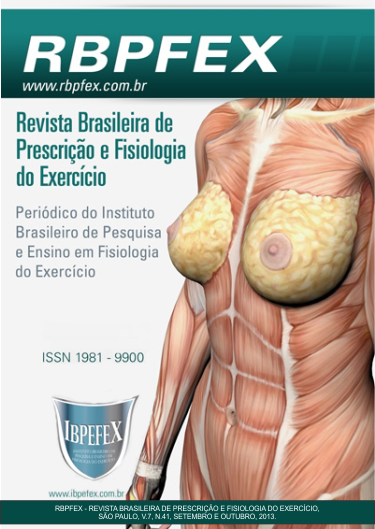The speed in sports
Abstract
The displacement speed of the athletes is expressed in movement patterns known in literature as sprints. Defined as short-duration and maximal intensity activities, they manifest in patterns of movement such as running, cycling and swimming. However, sprints are considered as muscular power manifestations, we can ask ourselves about what capacity we should aim to develop: speed or power? The aim of this study was to discuss the current concepts and definitions of the speed and power in sports.
References
-Bishop, D.; Girard, O.; e colaboradores. Repeated-Sprint Ability -Part II: Recommendations for Training. Sports Med. Vol. 41. Núm. 9. p. 741-756. 2011.
-Byrne, P. J.; Moran, K.; e colaboradores. A comparison of methods used to identify 'optimal' drop height for early phase adaptations in depth jump training.J Strength Cond Res. Vol. 24. Núm. 8. p. 2050-2055. 2010.
-Cormie, P.; McGuigan, M. R.; e colaboradores. Developing maximal neuromuscular power: Part 1--biological basis of maximal power production. Sports Med. Vol. 41. Núm. 1. p. 17-38. 2011a.
-Cormie, P.; McGuigan, M. R.; e colaboradores. Developing maximal neuromuscular power: part 2 -training considerations for improving maximal power production. Sports Med. Vol. 41. Núm. 2. p. 125-146. 2011b.
-Dintiman, G. B.; Ward, R. D. Sports speed, Human Kinetics Publishers. 2003.
-Folland, J. P.; Williams, A. G. The adaptations to strength training: morphological and neurological contributions to increased strength. Sports Med. Vol. 37. Núm. 2. p.145-168. 2007.
-Girard, O.; Mendez-Villanueva, A.; e colaboradores. Repeated-sprint ability -part I: factors contributing to fatigue.Sports Med. Vol. 41. Núm. 8. p. 673-694. 2011.
-Hodgson, M.; Docherty, D.; e colaboradores. Post-activation potentiation: underlying physiology and implications for motor performance. Sports Med. Vol. 35. Núm. 7. p. 585-595. 2005.
-Knuttgen, H. G.; Komi, P. V. Basic considerations for exercise.Strength and power in sport 3. 2003.
-Kraemer, W. J.; Häkkinen, K. Strength training for sport, Wiley-Blackwell. 2002.
-Markovic, G.; Mikulic, P. Neuro-musculoskeletal and performance adaptations to lower-extremity plyometric training. Sports Med. Vol. 40. Núm. 10. p. 859-895. 2010.
-Ross, A.; Leveritt, M.; e colaboradores. Neural influences on sprint running: training adaptations and acute responses. Sports Med. Vol. 31. Núm. 6. p. 409-425. 2001.
-Schilling, B. K.; Stone, M. H.; e colaboradores. Snatch technique of collegiate national level weightlifters. J Strength Cond Res. Vol. 16. Núm. 4. p. 551-555. 2002.
-Tillin, N. A.; Bishop, D. Factors modulating post-activation potentiation and its effect on performance of subsequent explosive activities. Sports Med. Vol. 39. Núm. 2. p. 147-166. 2009.
Authors who publish in this journal agree to the following terms:
- Authors retain the copyright and grant the journal the right of first publication, with work simultaneously licensed under the Creative Commons Attribution License BY-NC which allows the sharing of the work with acknowledgment of the authorship of the work and initial publication in this journal.
- Authors are authorized to enter into additional contracts separately for non-exclusive distribution of the version of the work published in this journal (eg, publishing in institutional repository or book chapter), with acknowledgment of authorship and initial publication in this journal.
- Authors are allowed and encouraged to post and distribute their work online (eg, in institutional repositories or on their personal page) at any point before or during the editorial process, as this can bring about productive change as well as increase impact and impact. citation of published work (See The Effect of Free Access).






